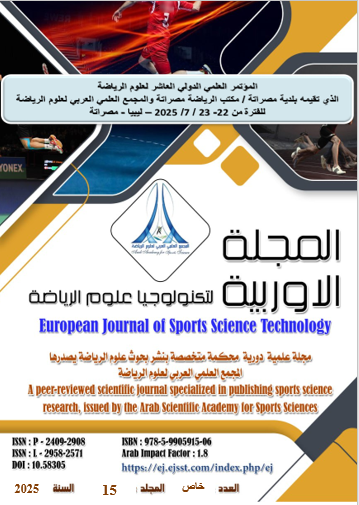The Impact of Mental Imagery on Football Referees in the Western Region
DOI:
https://doi.org/10.58305/ejsst.v15iSpecial%20issue.690Keywords:
mental imagery, football referees, Western RegionAbstract
The aim of this research was to measure the level of mental imagery among football referees in the Western Region. It was also to identify the percentage of variation between the questionnaire axes for mental imagery among football referees in the Western Region.
The research questions were: What is the level of mental imagery among football referees in the Western Region?
What is the percentage of variation between the questionnaire axes for mental imagery among football referees in the Western Region?
The researcher used a descriptive survey approach, as it is appropriate for the nature of this research.
The research population consisted of (16) first-class football referees in the Western Region.
The researcher used a questionnaire as a tool to collect data and information, enabling the researcher to identify the level of mental imagery among football referees in the Western Region. The researcher used the mental imagery scale, prepared by Muhammad al-Arabi Shamoun and Majda Ismail. This scale was presented to a number of experts, and some axes and phrases were excluded due to their inappropriateness to the Libyan environment. The researcher concluded that mental imagery has an impact on skill learning and development. The closer the mental imagery is to nearby objects, the greater the impact on skill learning. The mental imagery of referees was generally good, as it had an impact on retrieving successive shapes, which played a role in skill mastery.










